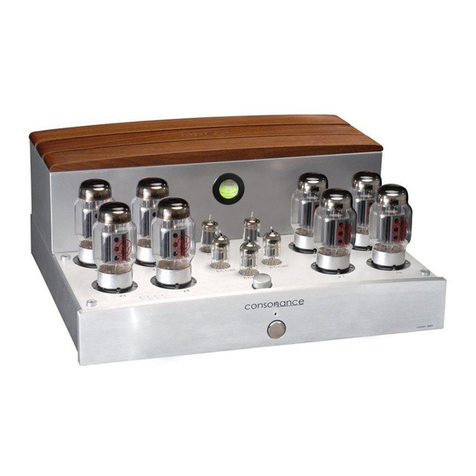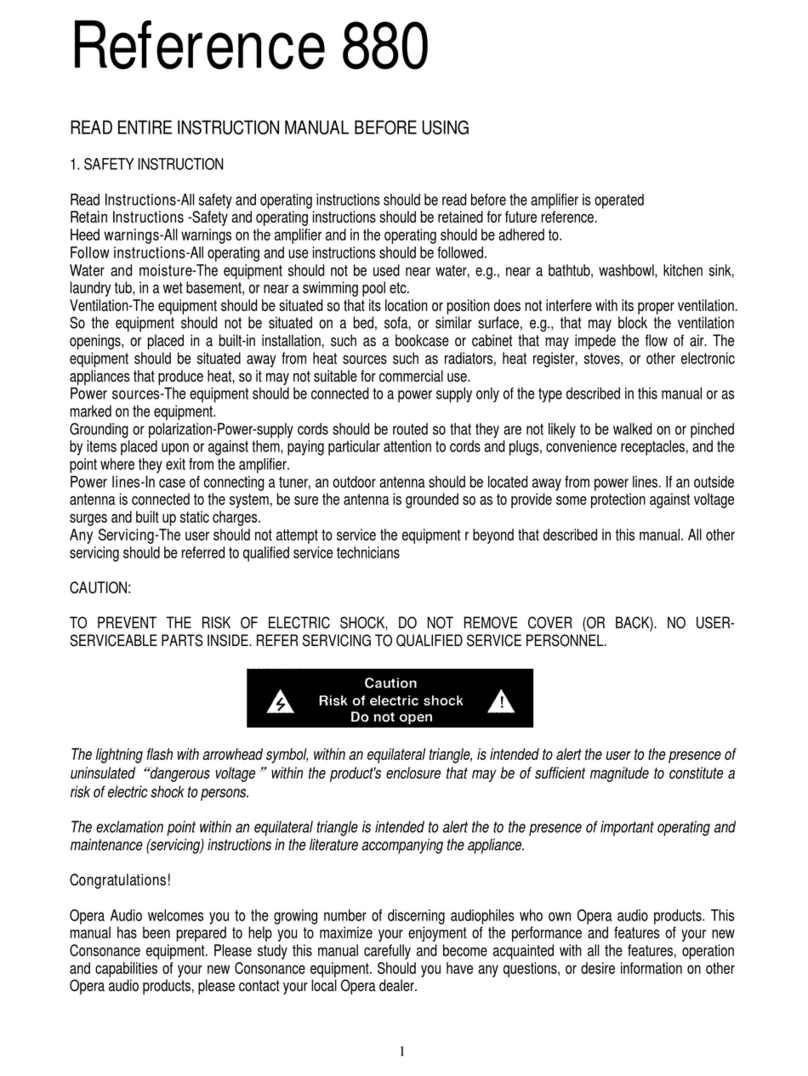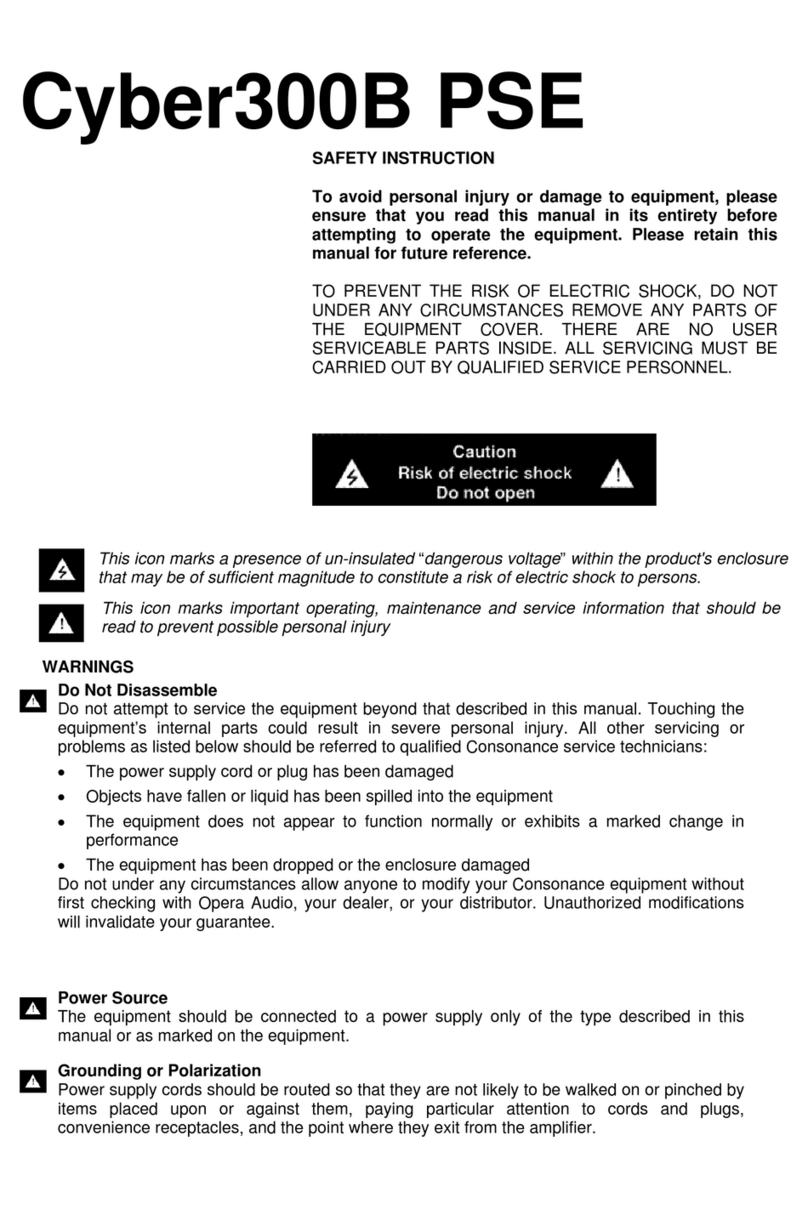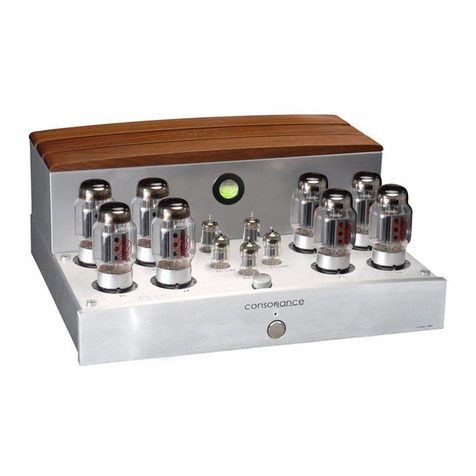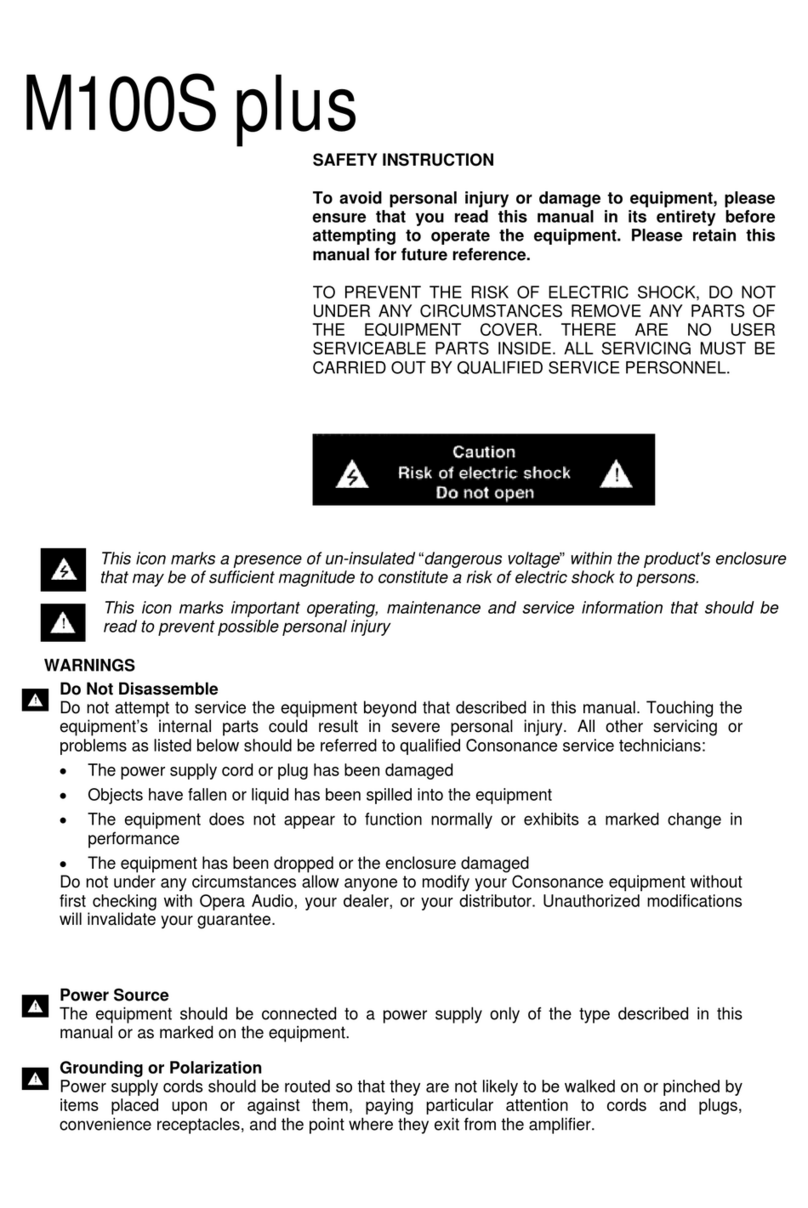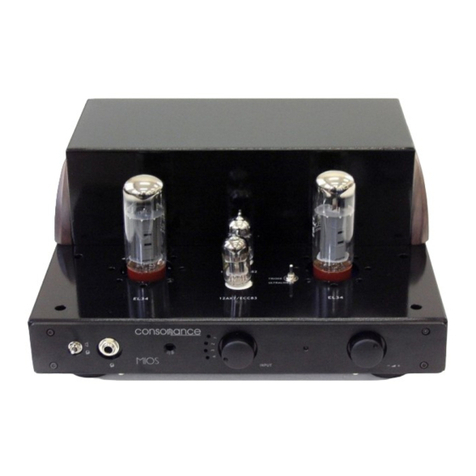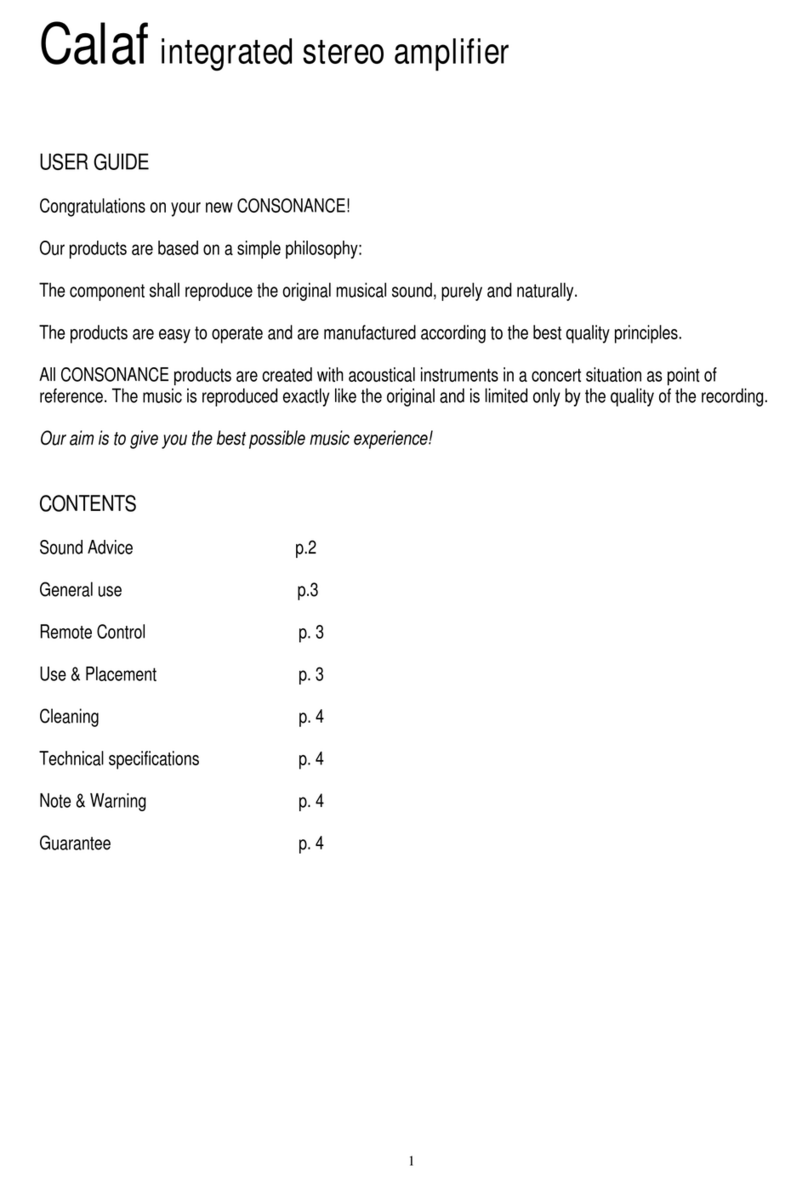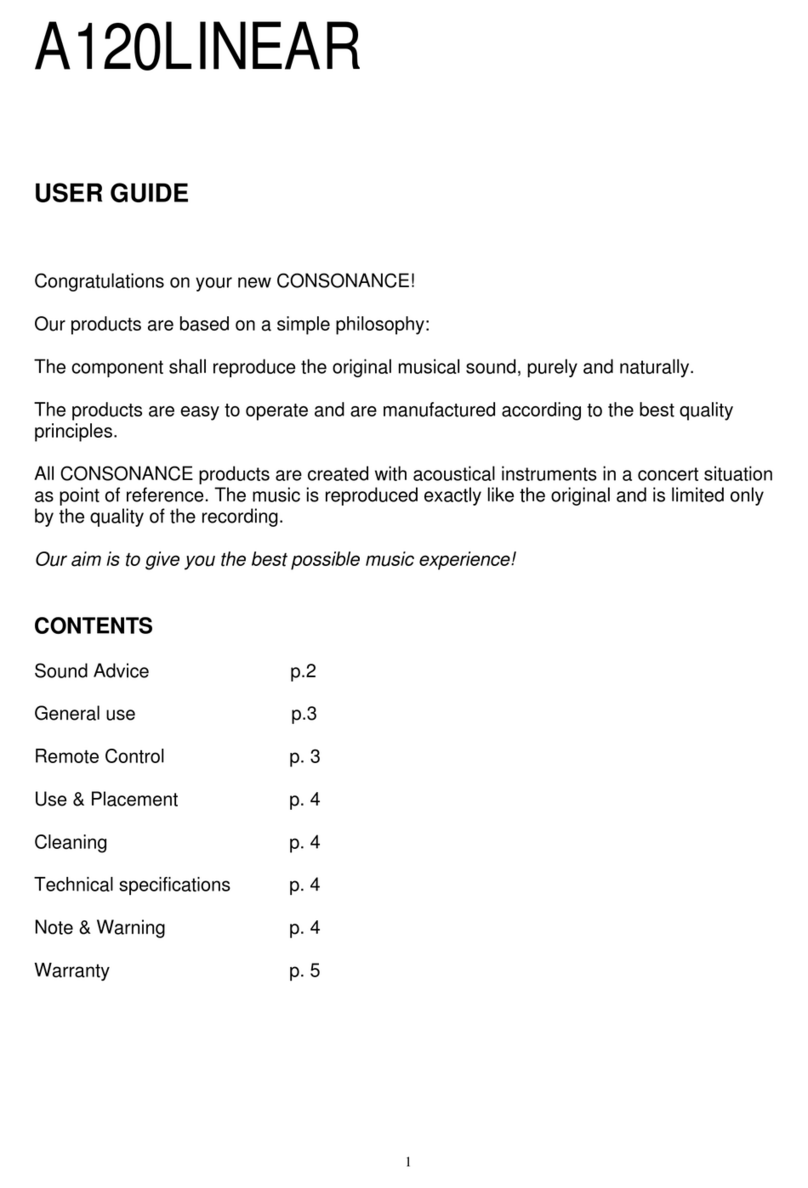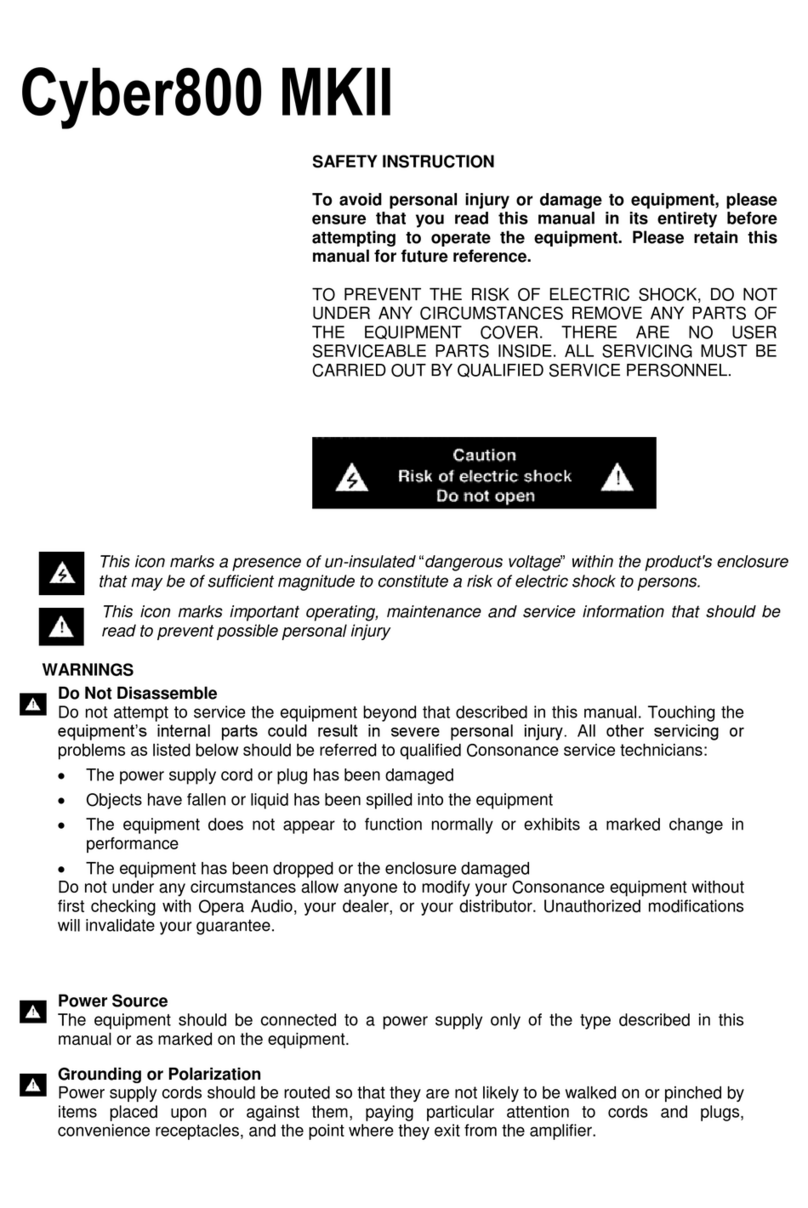6
USING TUBES
A. Bias
Bias is a negative voltage applied to a power tube's control grid, to set the amount of idle current the tube
draws. It is important to bias a tube to stay within its rated dissipation. Otherwise, you DO NOT need to worry
about small deviances from the manufacturer's recommendations. Many times we have customers asking us
things like, "I replaced the tubes, the old tubes ran at 35 mA, the new ones run at 38 mA. I'm worried that I
have to rebias the amp." This is NOT worth worrying about. Anyway many consonance amps have bias
adjustments. In that case, rebiasing is necessary. And some of them are designed so that you do not need to
concern yourself with bias. This includes all self sustained single-ended triode hi-fi amps.
B. When should I replace the tubes?
Practically speaking, you should only replace tubes in an audio amplifier when you start to notice changes in
the sound quality. Usually the tone will become "dull", and transients will seem to be blunted. Also, the gain of
the amplifier will decrease noticeably. This is usually enough of a warning for tube replacement.
C. Blue Glow -- what causes it?
Glass tubes have visible glow inside them. Most audio types use oxide-coated cathodes, which glow a cheery
warm orange color. And thoriated-filament tubes show both a white-hot glow from their filaments and (in some
amplifiers) a slight orange glow from their plates. All of these are normal effects. Some newcomers to the
tube-audio world have also noticed that some of their tubes emit a bluish-colored glow. There are TWO
causes for this glow in audio power tubes; one of them is normal and harmless, the other occurs only in a bad
audio tube.
1) Most glass power tubes show FLUORESCENCE GLOW. This is a very deep blue color. It can appear
wherever the electrons from the cathode can strike a solid object. It is caused by minor impurities, such as
cobalt, in the object. The fast-moving electrons strike the impurity molecules, excite them, and produce
photons of light of a characteristic color. This is usually observed on the interior of the plate, on the surface of
the mica spacers, or on the inside of the glass envelope. THIS GLOW IS HARMLESS. It is normal and does
not indicate a tube failure. Enjoy it. Many people feel it improves the appearance of the tube while in operation.
2) Occasionally a tube will develop a small leak. When air gets into the tube, AND when the high plate voltage
is applied, the air molecules can ionize. The glow of ionized air is quite different from the fluorescence glow
above--ionized air is a strong purple color, almost pink. This color usually appears INSIDE the plate of the
tube (though not always). It does not cling to surfaces, like fluorescence, but appears in the spaces
BETWEEN elements. A tube showing this glow should be replaced right away, since the gas can cause the
plate current to run away and (possibly) damage the amplifier.
D. What is Class A, B, AB, ultralinear, etc?
1. Class A means that the power tube conducts the same amount of current all the time, whether idling or
producing full power. Class A is very inefficient with electricity but usually gives very low distortion.
There are single-ended class-A, or SE, amplifiers. They use one or more tubes in parallel, which are all in
phase with each other. This is commonly used in smaller guitar amps and in exotic high-end amplifiers. Many
audiophiles prefer the SE amplifier, even though it has relatively high levels of even-order distortion. Most
300B high-end amplifiers are SE. Negative feedback, which can be used to decrease the distortion of an
amplifier, is felt by some people to sound inferior. Most SE amps have no feedback.
Push-pull class-A amplifiers also exist--they use two, four or more tubes (always in pairs) which are driven in
opposite phase to each other. This cancels out the even-order distortion and gives very clean sound. An
example of a class-A push-pull amplifier is the M100S. Push-pull Class A operation usually involves low plate
voltages and high plate currents, compared to Class AB operation below. The high currents might tend to
wear out the tube cathodes faster than in an AB amplifier.
2. Class AB applies only to push-pull amplifiers. It means that when one tube's grid is driven until its plate
current cuts off (stops) completely, the other tube takes over and handles the power output. This gives greater
efficiency than Class A. It also results in increased distortion, unless the amplifier is carefully designed and
uses some negative feedback.
